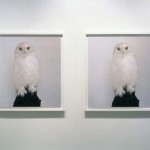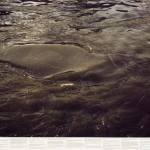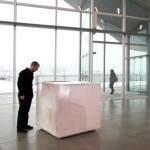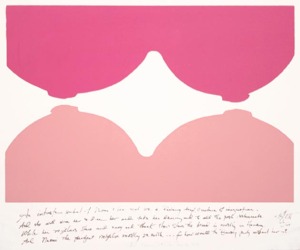Cambridge’s Rachel Yurman: See Marville Exhibit at Met before it’s gone!
Spending a day out of Cambridge? If you wish you were in Paris but can only make it to New York -– take your dreams to the Met and see “Charles Marville: Photographer of Paris” and “Paris as Muse: Photography 1840s-1930s,” (both through May 4) and “The Passions of Jean-Baptiste Carpeaux” (through May 26)
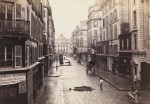
[Rue de Constantine]
Charles Marville (French, Paris 1813–1879 Paris)
Date: ca. 1865 Medium: Albumen silver print from glass negative Dimensions: 27.3 x 36.8 cm (10 3/4 x 14 1/2 in.) Classification: Photographs Credit Line Permission Requested: Purchase, The Horace W. Goldsmith Foundation Gift, through Joyce and Robert Menschel, 1986 Accession Number: 1986.1141
)- CHARLES MARVILLE AT THE METROPOLITAN MUSEUM OF ART
Fifth Avenue at East 79th Street
“ A bittersweet meditation on the meaning of nostalgia and the evolution of urban centers”- The Met’s current exhibit of Paris street scenes by 19th-century French photographer Charles Marville is a revelation of memory and awareness that rebuffs the notion of nostalgia.
- Marville (1813-1879), the son of modest tradespeople, used various techniques to document the destruction and re-creation of Paris from the early 1850’s through the 1870’s. From 1862 on, he was the official photographer of the city of Paris.
- The neighborhoods and buildings Marville captured in these wondrous and sad images are long gone, having made way for the Paris of Napoleon III and his chief architect and planner, Baron Georges-Eugène Hausmann.The gilded, historic Paris that many of us know — the Belle Epoque city of grand boulevards and the Palais Garnier — was born in Marville’s time. Preservationism was evolving, as well, through the necessary process of repairing and cleaning such monuments as the great cathedral of Chartres, Notre Dame de Paris, and the Sainte-Chapelle.
- The impulse to capture the past while obliterating it from sight is the beating heart of these photographs, which preserve the gritty city of Murger’s Scènes de la Vie de Bohème and Hugo’s Les Misérables .In Marville’s photos, the outskirts of this Paris still look rural, even desolate. Most of its streets appear to be empty, in part because images were taken very early in the day, but also because Marville’s exposures weren’t long enough to capture pedestrians and carriages in motion. The rare figures here and there were actually posed within the frame by the artist.The “Hausmannization” of Paris, a cramped, crowded, and less romantic city than the one we imagine, began in the 1850’s under Emperor Napoleon III. In addition to clearing medieval slums, upgrading sanitation, building parks, and restoring public monuments, the creation of boulevards and wider streets was intended to thwart those who might build and mount barricades, as they had in the uprisings of 1830 and 1848.Marville recorded everything. The old buildings, covered with advertising and all kinds of affiches touting such modern conveniences as the folding umbrella. The glass-covered, shop-lined alleys called passages, soon to be overshadowed by the department stores, les grand magasins. The old industrial areas that dumped waste into the Seine tributaries and canals. The timeless stares of tannery workers.The emerging wonders of the city are displayed here, too. Hausmann’s “street furniture,” advertising kiosks, gas lamps, and – mais oui – public urinals, are respectfully and meticulously documented by Marville’s camera. Most remarkable, perhaps, are the photographer’s views of the Avenue de l’Opéra as it was being built in the 1870’s. Leading to the new Opéra, now called the Palais Garnier, the neighborhood is shown post-demolition and pre-construction, looking like nothing so much as a war zone.One of the final ironies is learning that Marville himself was a victim of Hausmann’s grand plan. The photographer’s own studios were demolished and, during the 1871 uprising afterthe Franco-Prussian War, the Hôtel de Ville came under attack and much of its archival material – including Marville’s work as official photographer — was destroyed.
The exhibition is a bittersweet meditation on the meaning of nostalgia and the evolution of urban centers, whose periodic re-invention is both necessary and heartless. Nostalgia is a construct; there are many pasts beyond the ones we recall and imagine. The home that you long for may be just one of a cascade of images, seen for an instant in a series of receding mirrors.
–Rachel Yurman, Cambridge, MA
© 2014New Cambridge Observer is a publication of the Harris Communications Group, an award-winning public relations and marketing firm based in Kendall Square, Cambridge, MA.
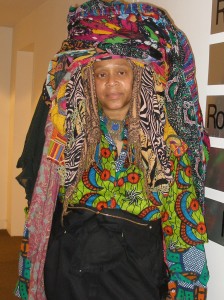
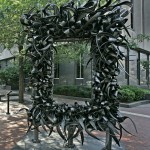
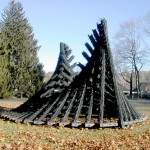
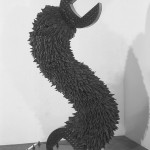
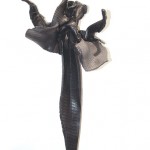

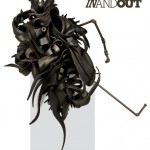
 At Boston’s
At Boston’s 
